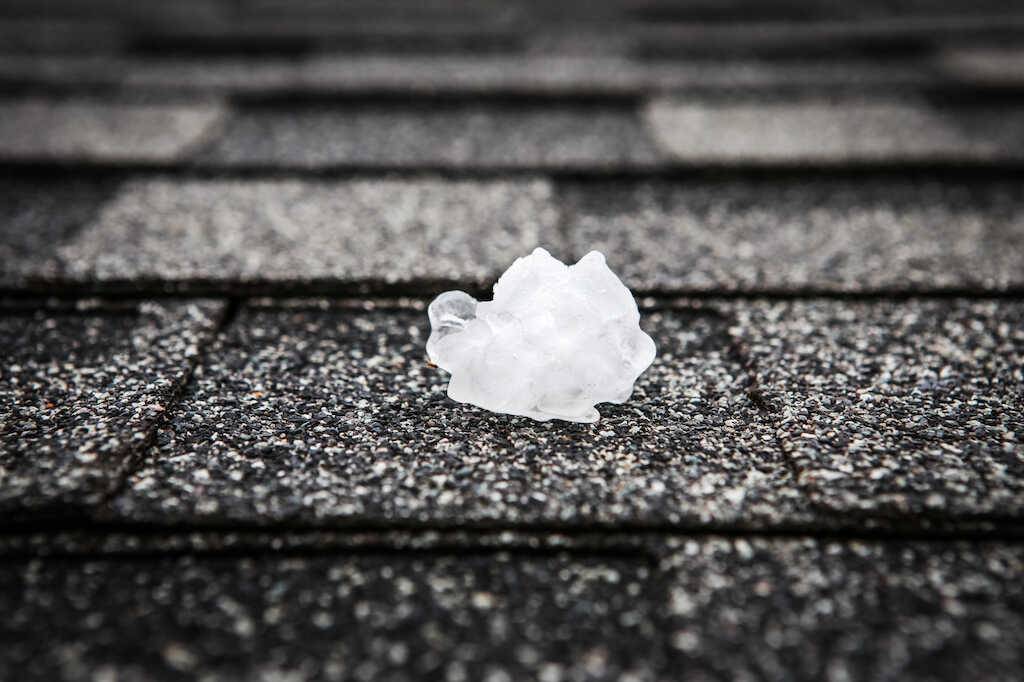It’s important to prevent summer roofing problems when you’re a home owner in East Central Illinois. Shingles that are damaged or have reached the end of their useful life will start to curl, crack or blister, but that’s often hard to see from the ground level of your home. If your roof shingles are damaged, you may start to notice that your roof just looks weird. Some areas may look highly textured compared to others- it may even look “bumpy” from the ground. Either way, if you are seeing these warning signs, you need to call a professional ASAP to schedule a free inspection.
It’s important to identify roof damage as quickly as possible, as the impact of a damaged roof could have significant consequences when summer storms hit.
So, what should you do if there’s just been a storm in your area? Here are our simple tips.
Do You Have Roofing Problems from a Summer Storm?
If you see missing or warped shingles, it could be due to storm damage, or it may be because your roof is past its prime. When shingles become loose or fall off, the area becomes exposed and this often leads to roof leaks.
Cracked and Dented Shingles from Summer Storms
One of the most apparent signs there’s damage is shingles that have cracked or shingles that show dents in them from where the hail hit.
You might be surprised by the amount of damage hail can do. A cracked shingle can have small sliver-like cracks to large cracks that almost break apart a shingle.
Either way, the shingle’s damaged, and you’ll need to address it. Cracks in shingles mean water can seep through to the underlayment layer, and you’ll quickly see leaks.
Missing or Curled Shingles Caused by Storm Damage
Another sign of a storm-damaged roof is when shingles are completely torn off the roof.
When you have a severe or long-lasting storm, shingles can eventually break and come right off the roof.
The other thing you might see after a long, sustained storm is curling shingles. The edges can get beat up and will curl as a result.
Loss of Granules After Summer Storms
Asphalt shingles are much like very rough sandpaper. The surface of a shingle is covered with granules.
During a hail storm, the hail hits the shingle and loosens the granules from the surface.
With the layer of granules, the shingle has the asphalt layer exposed and will break down more quickly. They age more quickly and don’t repel water as effectively.
While not part of your roof, your siding can also help figure out if your home has been exposed to damage.
Like your shingles, you might look to your siding for clues. If you see dents and scratches in the siding after a storm, you will likely also have hail damage to your roof.
Start With a Roof Inspection
Once you know what to look for, you should try to inspect your roof, but don’t climb up on your roof without safety gear or if you’re not accustomed to heights.
In most cases, if you can’t see damage from the ground, it might be best to contact a roofing professional for an inspection.
Call Your Insurance and Make a Claim
If you suspect you have hail damage, it makes sense to contact your homeowner’s insurance and start a claim. Most insurance companies will want to send their own adjusters for an inspection.
Once the claim process gets started, you’ll know what the insurance company is willing to repair and how much you’ll get for repairs.
Plan for the Repair Right Away
To avoid the inevitable leaking roof, don’t put off having your roof inspected and repaired if it shows damage. Once shingles are compromised, you run the risk of a leak starting, which will only lead to additional attic and interior damage.
Getting Roof Damage From Summer Storms Fixed Right Away
Roof damage from hail is more common than you might suspect. If you live in a climate susceptible to heavy storms, pay attention to the possibility of roof problems that might come from hail damage.
If you’re not comfortable inspecting your roof, let us help you. Contact us today to arrange a free assessment of the condition of your roof and whether you need repairs or a new roof installed.

